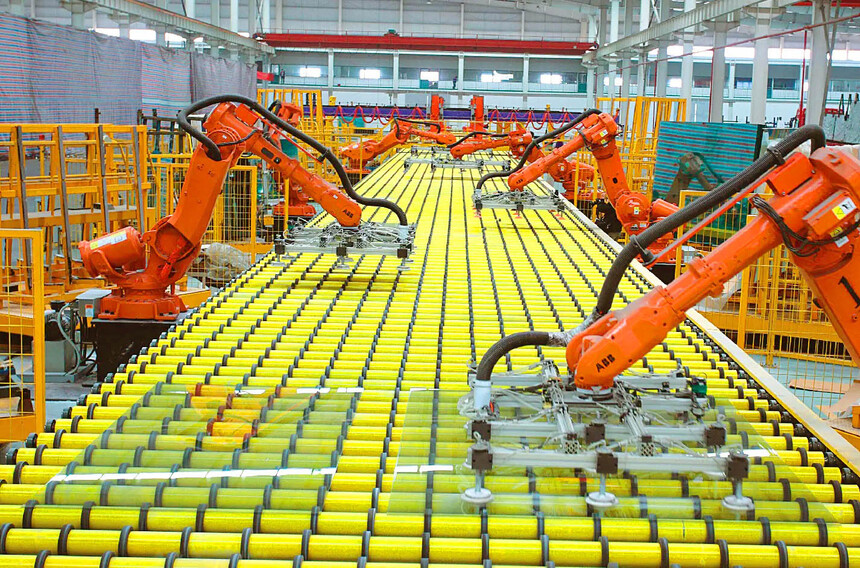|
Manufacturing continues to recover China remains strong
Source: International Finance News 2020-09-07 "Although the global economy and manufacturing industry continue to recover, it remains to be seen whether the recovery of global manufacturing industry and economy can be sustained under the risk of repeated and rebounding coVID-19 outbreaks in many countries and against the backdrop of no apparent turnaround in china-us relations." The global manufacturing recovery continued in August. In the West, many economies in Europe and the United States continue to expand, but some countries shrink still need to cause enough attention. In the East, China stood out for six consecutive months of expansion, while contraction in Japan, South Korea and ASEAN continued to slow. Despite the continuous recovery of the global economy and manufacturing industry, it remains to be seen whether the recovery of the global manufacturing industry and economy can be sustained under the risk of repeated and rebounding coVID-19 outbreaks in many countries and against the backdrop of no apparent turnaround in china-U.S. conflicts. Us: Manufacturing continues to improve challenges The ISM manufacturing PMI recorded a reading of 56.0 in August, above expectations and the highest since January 2019, as it expanded for a third straight month. A number of sub-indicators continued to rebound, with the new orders index continuing to grow 6.1 percentage points in August after a surge in July, indicating a further acceleration in the recovery in demand. The output index grew at a rate of 1.2 percentage points, guaranteeing a continued uptick in supply. New export orders and import indexes expanded for the second consecutive month, indicating continued improvement in foreign trade. In addition, the employment index rose to 46.4, up 2.1 percentage points from the previous reading, still shrinking but indicating an improvement in the extent of the decline in manufacturing employment. The expansion of the MANUFACTURING industry in the United States for three consecutive months, on the one hand, indicates that the manufacturing industry is in the late stage of destocking and the early stage of active replenishment. On the other hand, it also reflects the relatively weak impact of the epidemic on the manufacturing industry. In the face of higher orders and lower inventories, more factories have increased production, and the environment for producers has stabilized after months of sharply reduced demand during the epidemic lockdown. However, the pace of improvement is likely to slow as coronavirus prevents a sustained acceleration in demand. The steady recovery of the US manufacturing sector still faces many challenges, including high unemployment nationwide, an accelerated increase in the recent coVID-19 cases, reduced business investment, weak global demand, and escalating tensions between China and the US. Meanwhile, manufacturing accounts for only about 11% of the U.S. economy, and continued improvement in manufacturing is likely to have a limited impact on the overall U.S. economic recovery. Europe: Manufacturing declines in some countries The final Markit manufacturing PMI for the euro zone recorded a reading of 51.7 in August, the second straight month of expansion. Production and new orders continued to be the main drivers of the improvement in manufacturing in August. Although the epidemic has rebounded in some countries, it has not greatly hindered the overall demand and production improvement. As a result, the production index reached the highest level since April 2018, and the new orders index expanded for two consecutive months. This is further evidence that eurozone manufacturing will rebound sharply in the third quarter after collapsing at the height of the epidemic in the second quarter. But the contraction in leading members France and Spain in August needs to be taken seriously. Despite continued improvements in production and operations, companies remain cautious about costs and spending, especially on investment and hiring. At present, the market is still concerned about the strength of future demand, and the development of the epidemic remains relatively uncertain. Thanks to strong output growth and a boost in new orders and exports, the manufacturing PMI for the eurozone and Germany, the largest member of the EU, rebounded further to 52.2 in August, the highest since October 2018, suggesting that manufacturing across Germany continued to improve as demand steadily recovered. In particular, the output index hit a two-and-a-half-year high, while the export index hit its highest level since April 2018 as demand from overseas sources such as China surged. In addition, the pace of unemployment and job losses has eased as manufacturers operate and become more confident about the future. Still, some German manufacturers are struggling with weak demand, particularly for machinery and equipment production, and the industry is being hit by a lack of willingness to invest. French manufacturing contracted again in August after two months of strong growth. New orders barely rose in August as the outbreak rebounded, underscoring the hesitancy of manufacturers' customers to commit to future business. The slowdown in production growth also led to a renewed acceleration in the pace of job cuts, business fears about the year ahead and confidence falling to its weakest level in three months. British manufacturing rose to 55.2 in August, a two-and-a-half-year high. New domestic orders continued to grow after the economy restarted, helping output jump to its highest level since May 2014. As restrictions on novel Coronavirus transmission continue to be eased, the current rebound is driven by restarting business among manufacturers and rebounding customer demand. But unemployment has yet to improve significantly. Given that demand is picking up and the risk of an outbreak remains high, the UK's future path to recovery remains highly uncertain. Japan and ASEAN: Manufacturing contraction slows further Japan's manufacturing PMI came in at 47.2 in August, continuing an improvement from the previous month but still shrinking for the 16th consecutive month. Output and new orders fell at their slowest pace since February and January. The drop in orders from overseas was the slowest in nearly seven months. Employment also fell by the smallest amount in three months, with headcount converging slightly. South Korea's manufacturing sector continued to hit its highest level since January in August, but remained below the 50-point line separating expansion from contraction for eight consecutive months. New orders climbed to a seven-month high, declines in production, employment and exports slowed, and business expectations for the future showed a positive outlook for the first time since February. However, these figures do not fully reflect the rise in confirmed cases in South Korea since late August. The contraction in asean's manufacturing PMI continued to slow in August, with a reading of 49.0. The output index returned to expansion for the first time in six months and new orders contracted at their best pace since March. But foreign demand continues to fall, making exports the biggest impediment to a recovery in ASEAN manufacturing. China: The manufacturing sector operated smoothly on the whole The manufacturing PMI came in at 51.0, slightly lower than the previous reading of 0.2 percentage points, the sixth straight month of expansion, indicating that the sector was generally running smoothly. However, the manufacturing industry of small enterprises declined significantly, and the degree of prosperity for three consecutive months below the standard, the second lowest so far this year. Meanwhile, 15 of the 21 industries surveyed were above the tipping point, two fewer than in July. The manufacturing sector showed the following characteristics in August: First, demand continues to recover and the supply and demand cycle gradually improves. The production index and the new orders index decreased by 0.5 percentage points and rose by 0.3 percentage points, respectively. The new orders index rose for the fourth consecutive month, and the supply and demand structure improved. Second, we have kept our foreign trade policies stable, with exports on the whole showing a positive trend while imports remain uncertain. A series of policies to stabilize foreign trade and foreign investment continued to have an effect, and manufacturing exports further improved. The new export orders index came in at 49.1, up 0.7 percentage points, while the import index edged down 0.1 percentage points. Third, the development of new growth drivers accelerated, and transformation and upgrading continued. From the perspective of key industries, the PMI of high-tech manufacturing and equipment manufacturing was 52.8 and 52.7, 1.5 and 0.9 percentage points higher than the previous figures, respectively, and 1.8 and 1.7 percentage points higher than the manufacturing PMI. The new drivers have injected vitality into the manufacturing recovery. Fourth, business expectations improved and business confidence increased. The expected index of business activities of enterprises was 58.6, 0.8 percentage points higher than the previous value. It is worth mentioning that the small business boom in August fell significantly. Small manufacturing enterprises are mainly concentrated in the downstream industries and export fields. Therefore, expanding domestic demand, especially consumer demand, and strengthening enterprises' export support are effective means to boost small enterprises in the short term. At the same time, measures to support small enterprises include structural monetary policies, targeted tax cuts and fee reductions, etc. They should also reduce the operating costs of small and medium-sized enterprises institutionally and reduce ownership discrimination. |










